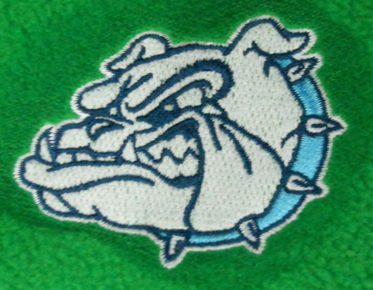Mastering Underlay Stitches in Embroidery Digitization
Embroidery is a beautiful art form that requires precision, skill, and attention to detail. One critical aspect of embroidery is underlay stitches, which serve as the foundation for embroidery objects, providing structure and stability to the design. As a professional digitizing company, Eagle Digitizing understands the importance of underlay stitches and how they contribute to the quality of the final product.
What is Underlay Stitches
Underlay stitches serve as the foundation of embroidery objects, providing structure and stability to the design. By placing running stitches in specific directions and varying stitch lengths, underlay ensures that top stitches appear clean and crisp.
The importance of underlay in
digitizing cannot be overstated, as it helps to maintain the integrity of a
design. By building up layers of embroidery on top of each other while
decreasing densities, you can create a polished finished product. Proper
underlay is especially crucial when working with fabrics of varying densities.
Different Types of Embroidery Underlay
When it comes to underlay stitches in embroidery digitization, there are multiple types to choose from, including center-run, edge-run, zigzag, double zigzag, fill-stitch underlay, and combinations of underlay stitches used together. The specific combination and stitching order will depend on the type of fabric being used and the embroidery application. By selecting the appropriate underlay technique, you can ensure a strong foundation for your embroidery design.
Center-Run Underlay
For small column satin stitches between 1.5mm-2mm, center-run underlay is the best option. This type of underlay is placed directly through the center of the object due to the limited space available. By using center-run underlay, you can ensure that your embroidery design is stable and well-defined.
Edge-Run Underlay
When the column stitch becomes wider, typically between 2.5mm-3.5mm, edge-run underlay is the preferred choice to provide a solid foundation. This type of underlay creates a "break wall effect," which helps to prevent the column stitch from spreading or losing its shape. By using edge-run underlay, you can ensure that your embroidery design maintains its integrity and looks clean and crisp.
Zigzags and Double Zigzags Underlay
Zigzags and double-zigzags are commonly used in combination with edge-run underlay when working with column widths of 4mm and wider. This is because wider columns often create empty spaces between the column stitches, which can cause the embroidery design to become distorted or pull. By using zigzags to secure the empty spaces, you can prevent this from happening.
It's important to note that the order in which you lay down the underlay stitches matters. The zigzag underlay should be placed first to secure the fabric, and then the edge-run underlay can be placed. If you place them in the opposite order, the zigzag underlay can pull on the edge-run underlay, causing it to lose its effectiveness as a break wall.
Fill-Stitch Underlay
If you're working with a filled
object that isn't outlined with a satin stitch and has an open edge, you can
use a combination of fill-stitch and edge-run underlay to secure the foundation
of the fill and create clean lines around the edges. By using these underlay
stitches, you can prevent the fill from shifting or distorting during the
embroidery process and ensure that the final result is neat and well-defined.
With this technique, you can take your embroidery designs to the next level and
achieve professional-looking results.
Length of Underlay Stitch
The length of underlay stitches used in embroidery digitizing is typically determined by the characteristics of the fabric being embroidered. Generally, a standard stitch length of 2.5mm is used for most underlay applications, but for materials such as fleece, terry cloth, leather, or vinyl, longer stitch lengths may be necessary to prevent short stitches from sinking into the fabric and failing to perform their intended function.
In conclusion, underlay stitches
are a crucial aspect of embroidery digitizing that should never be overlooked. By selecting the appropriate
underlay technique and order of stitching, you can ensure a strong foundation
for your embroidery design. As a
professional digitizing company, eagle digitizing has the expertise and
experience needed to create stunning embroidery designs with a solid foundation
that will stand the test of time. With our help, you can take your embroidery
to the next level and achieve professional-looking results.



